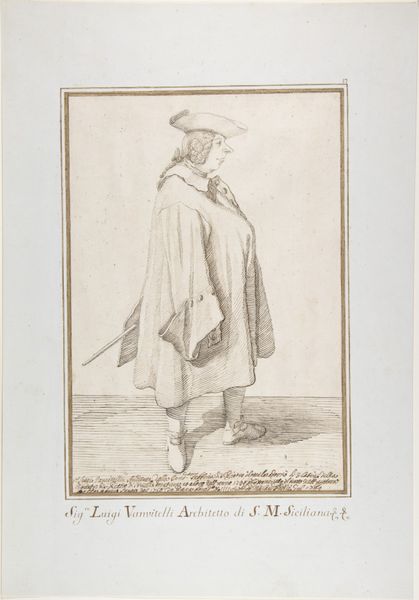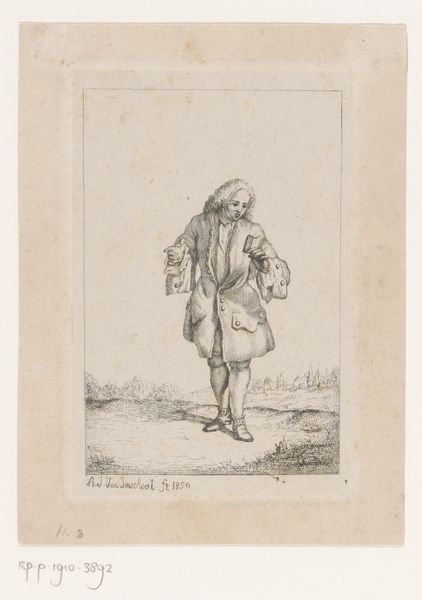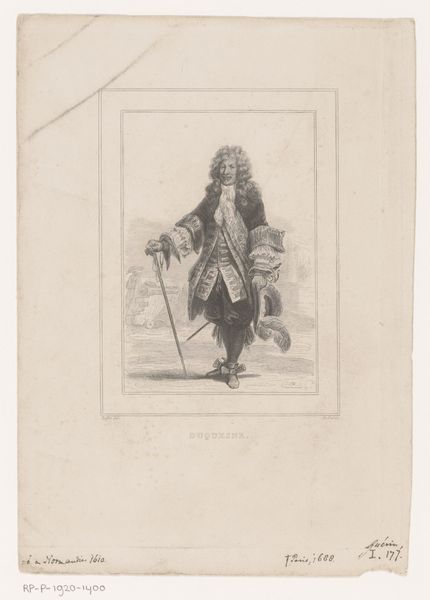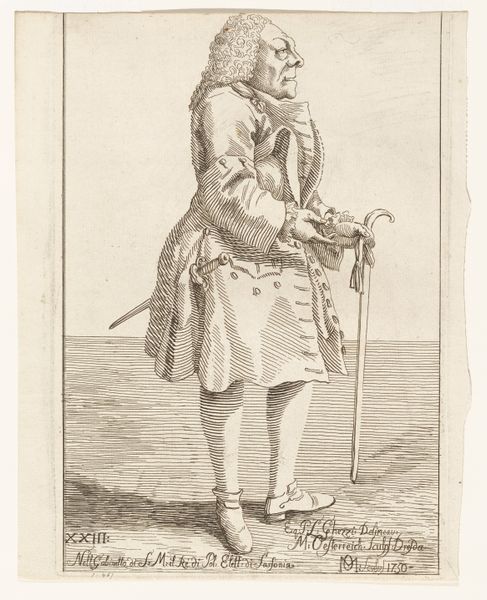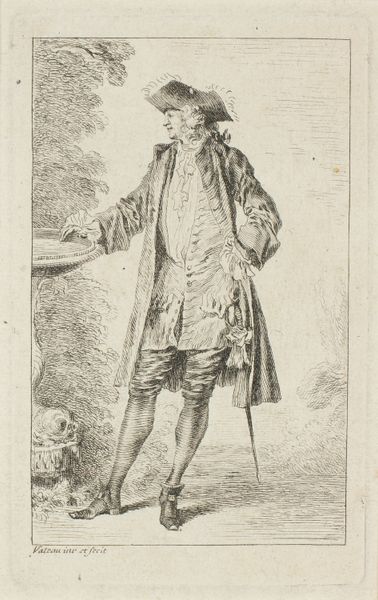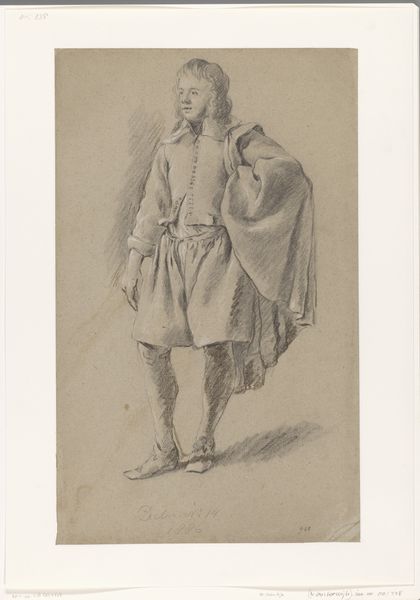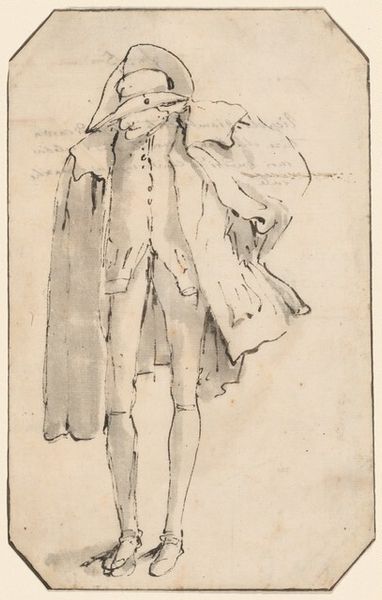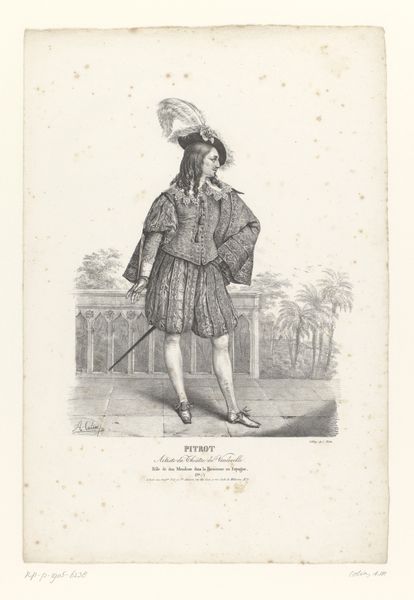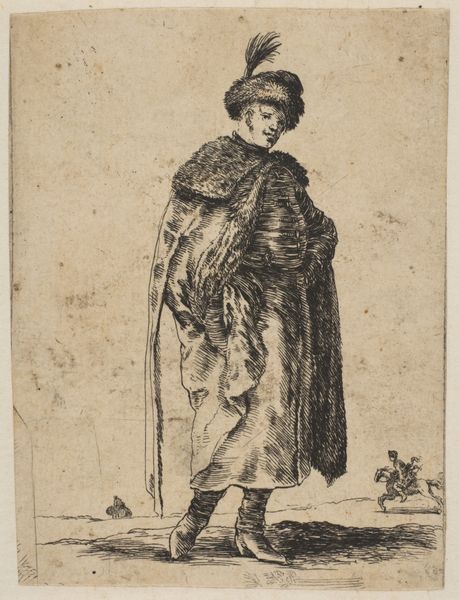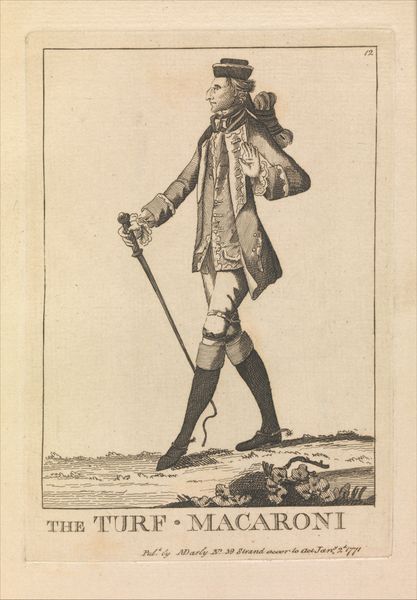
drawing
#
portrait
#
drawing
#
baroque
Dimensions: 12 1/2 x 8 3/4 in. (31.75 x 22.23 cm) (image)23 3/4 × 19 3/4 in. (60.33 × 50.17 cm) (outer frame)
Copyright: Public Domain
Editor: We’re looking at Pier Leone Ghezzi’s “Portrait of Giovanni Battista Maini” from 1749, a drawing held at the Minneapolis Institute of Art. The fine lines create a gossamer effect. I’m immediately struck by the odd characterization in this portrait. How do you interpret this work, its peculiar…exaggeration? Curator: Ah, Ghezzi! A mischievous chronicler of his Roman contemporaries. The exaggerated features, that hooked nose and jutting chin…it’s caricature, a popular form then, often employed with affection, or at least a knowing wink. Notice how Maini clutches what appears to be a relief sculpture of a Madonna and Child? Editor: I see it! What’s the significance of including that, beyond just identifying Maini as a sculptor? Curator: Well, consider this. It simultaneously acknowledges Maini's profession and perhaps subtly comments on his style, or even his talent, you know? It’s visual wit, really. Does the caricature then seem less about malice, and more a playful…recognition? Editor: Yes, seeing him hold his art makes it clear to me that it’s supposed to be playful rather than mean. It does feel like Ghezzi might be hinting at Maini’s sculpting style, almost like a fun inside joke. Curator: Exactly! And don't miss how even his clothing, that loose cloak and slightly disheveled wig, contribute to this light-hearted, even slightly subversive, portrayal. We can imagine Ghezzi capturing the essence of Maini’s character, quirks and all. Editor: I love that idea, seeing this drawing as a candid snapshot almost. I think it is that much more relatable seeing him almost in the middle of the work. Thanks to your insights, what I initially perceived as mocking now reads as charming. Curator: That's the magic of art, isn't it? Revealing unexpected layers.
Comments
minneapolisinstituteofart almost 2 years ago
⋮
The 18th century Italian painter Pier Leone Ghezzi is best remembered for his satirical drawings of friends, colleagues, and the Grand Tourists in Rome, which he produced in great number. Here he represents the sculptor Giovanni Battista Maini. Far from flattering Maini, Ghezzi exaggerated the size of his nose and lips, undoubtedly the fellow’s most recognizable features, to hilarious proportions. Ghezzi's style was gently mocking and comical, using simple pen and ink to exaggerate a few select features of his sitters. In this way, he captured an individual's essential character. For a century before Ghezzi Italian artists had practiced caricature--the word derives from the Italian verb caricare, which means to burden, overload, or exaggerate--yet he was key to its development. He transformed the informal sketches and visual puns produced in artists' workshops in the 17th century into a specialized artistic genre, one that satirized specific individuals rather than societal types. His influence on the genre of caricature cannot be overstated. Extremely prolific, Ghezzi produced thousands of caricature drawings, many of which found their way to England via tourists. Prints were also produced after his works, further disseminating his manner. The long inscription on the drawing in Ghezzi’s hand describes various sculptures by Maini. Ghezzi depicted the same sitter in an earlier caricature (1742), which is now in the Biblioteca Apostolica Vaticana, Rome (Ottob. Lat. 3118, fol. 139).
Join the conversation
Join millions of artists and users on Artera today and experience the ultimate creative platform.
